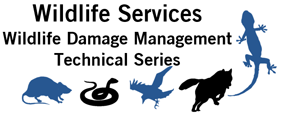United States Department of Agriculture: Animal and Plant Health Inspection Service

Wildlife Damage Management Technical Series
Date of this Version
2-2018
Document Type
Article
Citation
Marks, D.M. 2018. Mute Swans. Wildlife Damage Management Technical Series. USDA, APHIS, WS National Wildlife Research Center. Fort Collins, Colorado. 14p.
Abstract
Mute swans (Cygnus olor) are an invasive species originally brought to the United States in the late 19th and early 20th centuries for ornamental ponds and lakes, zoos and aviculture collections. Original populations were located in northeastern states along the Hudson Valley but have since expanded to several Midwestern states and portions of the western U.S. and Canada. Mute swan damage includes competing with native waterfowl, destroying native plants, spreading disease, and colliding with aircraft. They are also considered a nuisance in some areas due to their abundant fecal droppings and aggressiveness towards people.
Mute swans can impact ecosystems by foraging on native plants and competing with native species for food and habitat. Mute swans forage primarily on submerged aquatic vegetation, and each swan consumes 4 to 8 pounds of vegetation per day. While feeding, mute swans use their feet to expose plant shoots and roots for foraging, and to help dislodge food for cygnets (i.e., young swans). This damages aquatic substrates and vegetation surrounding preferred foods. Mute swans typically consume less than 50 percent of what they remove. Results from one study showed their diet overlaps considerably with many native waterfowl species that overwinter in the lower Great Lakes or temporarily use the area during migration.
Mute swans are known for their highly territorial behavior during their breeding season, and may compete with native wildlife for space and associated resources. Of particular concern are potential impacts on threatened and endangered species. During the breeding season, mute swans sometimes displace other native waterfowl from preferred nesting locations, and may kill adult and juvenile ducks and geese. During one incident in Maryland, a large molting flock of mute swans caused a colony of least terns (Sterna antillarum) and black skimmers (Rynchops niger) to abandon a nesting colony by trampling nests, eggs, and chicks. The mute swans also displaced nesting common terns (Sterna hirundo). In 2011 in Michigan, a mute swan nest was found in the middle of a black tern (Chlidonias niger) colony that had previously supported approximately 54 black terns in 2009. Only a few black tern nests remained, approximately 30 to 40 feet away from the swan nest.
Included in
Behavior and Ethology Commons, Biodiversity Commons, Other Animal Sciences Commons, Other Ecology and Evolutionary Biology Commons, Population Biology Commons, Terrestrial and Aquatic Ecology Commons


Comments
U.S. government work.